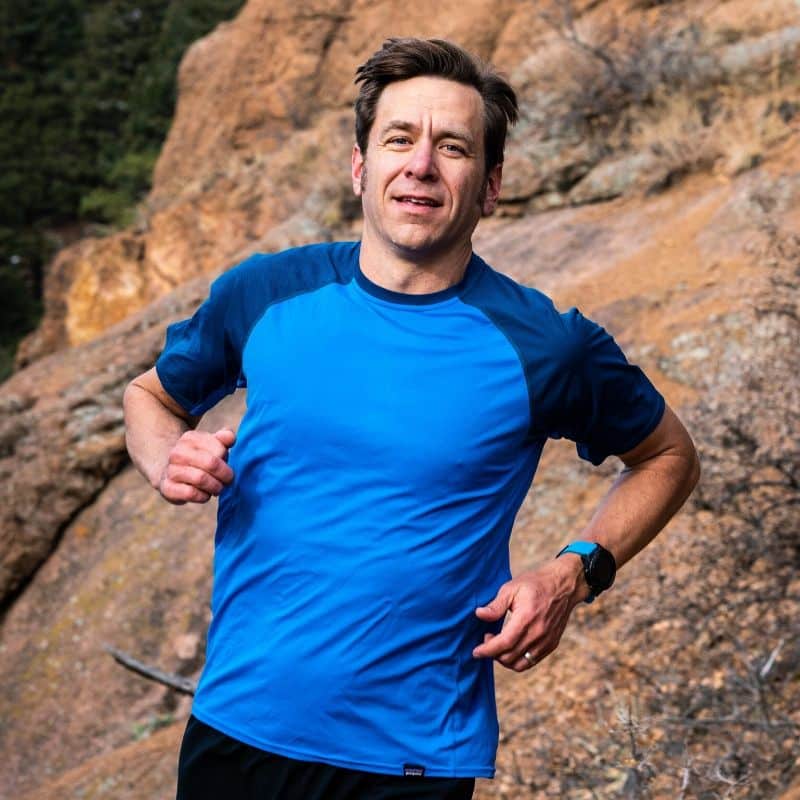
4 Truths All Ultrarunners Need to Accept
By Jason Koop, CTS Coaching Director and author of “Training Essentials for Ultrarunning”
One of the things I enjoy the most about being a coach is seeing athletes compete. For one thing, throughout the year I don’t spend a lot of time with the athletes I coach. In some ways I think that distance is good for the athletes and for me. Coaching remotely requires that I listen, read, and analyze information carefully because I’m not right there with them. It also helps the athlete because it allows me to stay more objective and focused on their training. When the time comes, it also means I relish the opportunity to see my athletes put their hard work into practice on race day.
I was fortunate enough this year to attend the San Diego 100, Bighorn 100, Western States 100, Badwater 135 and the Hardrock 100 either supporting or pacing athletes. These five races were all within a five week timeframe, giving me not only the opportunity to see athletes put their training into practice, but also compare how athletes in each race fared.
The experience was eye opening. Each event had its own set of challenges, from epic mud at Bighorn to searing heat at Western and dizzying altitudes at Hardrock. However, the biggest eye opener was not the challenges laid in front of the athletes, but how they chose to rise to the occasion and deal with them.
By far, the athletes that looked the best throughout the race were the ones at the Hardrock 100. This is not to say that the race came easy for them. The race was marked by severe hailstorm early in the race. Athletes arrived into the subsequent aid stations with welts from the onslaught. Despite the weather, and Hardrock’s notorious high alpine environment, Hardrock had a finisher rate of 87%. That means nearly 9 in 10 athletes who took on one of the toughest 100-mile footraces in the world finished it. This demonstrates that it is not how hard the event is, but how you are prepared going into that event that will determine success.
I came away from my 5-week epic road trip with 4 truths ultrarunners need to accept in order to be successful in the sport:
Experience Matters
Many athletes wait five years or longer to get into Hardrock. All the while they have to maintain their qualifications, which means training and racing and gaining experience. And the same is true for several other events that award entries through lotteries. Those years of waiting are not in vain. The experience gained through multiple seasons of training and series of qualifying events hones an athlete’s skills and exposes them to a wide range of race day scenarios. Part of the reason Hardrock had an 87% finish rate on a year that featured significant weather-related challenges is because the athletes competing at Hardrock have the experience required to handle adversity. I think the same can be said for the athletes who finished Bighorn and Western this year, considering the weather-related challenges athletes faced in those races.
You Have To Go All In
One of the athletes I coach, Andre Blumberg, exemplified the “all in” athlete this year. He lives and trains in Hong Kong and was one of the athletes who waited five years to get an entry to Hardrock. In a great post-race Facebook post he described the level of commitment he had to preparing for and completing the race. There are some events a reasonably-fit athlete can enter and just “wing it”, but not ultramarathons. And it’s more than just the fitness component that has to be dialed in. Athletes who achieve their ultramarathon goals go all in with all aspects of preparation, from putting in the training hours to researching the course, honing their nutrition strategies, perfecting their equipment choices, and preparing for the unexpected.
Your Mental Game Has To Be Dialed
CTS Coach Andy Jones-Wilkins was at both the Bighorn 100 and Western States Endurance Race, and afterward he wrote a great post for irunfar.com. In it he described the same scenarios I witnessed at those two races, of racers dropping out because they were defeated mentally rather than physically. There were certainly athletes who dropped from both races – and all five races I recently attended – because it would have been dangerous for them to continue. But there were racers at Bighorn who dropped at the halfway point because they could not mentally handle the prospect of running through the mud they had struggled through to get there.
► Free Ultrarunning Training Assessment Quiz
Take our free 2-minute quiz to discover how effective your training is and get recommendations for how you can improve.
Even Kaci Lickteig, one of the mentally toughest athletes I’ve ever met, nearly dropped out of Western States at the Rucky Chucky aid station because of the mental toll of getting there. She was struggling physically as well, but the physical challenges were surmountable. She had lost her will to continue. It took a village to get her out of her chair, and eventually it was the positivity beaming from Stephanie Case that revived her and got her back onto the trail. As Stephanie recalled in this great race report, once Kaci got moving again there was no doubt she’d go all the way to the finish.
Enjoying This Article? Get More Free Running Training Tips
Get our coaches' best training advice, delivered straight to your inbox weekly.
Ultramarathons will push you to the point of quitting. It’s part of the allure. It may take 20 miles, 74 miles, or 98 miles of running to get to that point, but part of the allure of ultrarunning is getting to that point and really finding out how deep you can dig. There will be times when you don’t have it in you and you drop out, but those experiences are part of the learning curve and what makes it even more special when you reach that point again and find the will to continue. To achieve your ultrarunning goals you have to develop the mental skills and toughness to stand on the start line of your goal race utterly convinced you will finish.
Crazy Shit Happens In Ultrarunning
If you are not willing to accept the fact that crazy shit is going to happen on your way from the start to the finish, don’t bother starting. Considering the number of variables involved, it’s almost impossible for crazy stuff NOT to happen over the course of 50 or 100 miles. In just the five races I attended recently there was super-slippery mud at Bighorn, snow followed by 100-degree heat at Western States, a severe hailstorm at Hardrock, and road construction that delayed crews in the withering heat of the Badwater 135. At Hardrock racers were fashioning makeshift shelters with jackets and trekking poles!
Ultrarunning is a sport that rewards adaptability. You have to be willing, able, and prepared to roll with whatever the course, the weather, or your stomach throws at you. The athletes who are most successful in ultrarunning aren’t easily flustered. They don’t complain about the weather or gripe about taking a wrong turn. They take everything in stride, because it’s all about taking that next stride.


Comments 15
I have noticed you don’t monetize your page, don’t waste your traffic,
you can earn extra cash every month because you’ve got hi quality content.
If you want to know how to make extra $$$, search for: best adsense
alternative Wrastain’s tools
Excellent post. Only change I would make would be the title, all the above apply to ultra=anything not just running. Took part in a 4 day 1450km ride from London to Edinburgh and back last week that could also be sub-titled crazy shit happens, in my case riding uphill a howling gale in the pitch black up a road that had been transformed to a river by torrential rain. As a finishing touch it was swarming with frogs, quite surreal.
You gotta want it bad enough!
If you are mentally dialed in and you picture yourself crossing the finish line over and over again you will get there imho…..
Crazy Shit Happens in Ultrarunning needs to be the title of your next book. Just saying.
I second that
Can the book please mention the crazy sh*tting that happens in ultra racing…..most unpleasant but learning to avoid foods that cause it and being prepared for it is all part of the training 😉
This should be required reading before ultra races! Just finished 133-mile Swiss Irontrail in 56 hours. 50% dropped. Experience, total commitment and mental game made all the difference when crazy shit hit the Alps.
A great write up. I recently DNF my first 100km ultra trail race due to a minor sprained ankle and an out of battery headlamp. I literally convinced myself my ankle is severely sprained and in pain. The most outrageous part was, my mind was turned upside down due to my headlamp. Lesson learned DIG DEEP and carry a set of spare batteries. Thanks for the insight.
I’d add that proper planning prevents piss poor performance. And that extends to planning during the off-season -nov/dec. It’s critical to have a clear understanding of the events you may want to do, how they will affect one another via proximity on the calendar. Ask yourself “I know I want to do X,Y and Z race but what can I AFFORD to do, not just financially, but mentally, physically and emotionally. How do all of your events coincide/impact with plans with your nuclear family, work and holidays.
In a single event a small ailment early on can send you into DNF territory. Over the course of your race season, issues with family and work can fester into a difficulty training properly, going off-diet or simply accelerate a head-on collision with burn-out.
Koop is exactly right on-just like his book which should be required reading for anyone running these distances. I have never run an ultra where there wasn’t an issue! No two ultras are the same and how you handle it and push through is what makes it count.
Great!
Pingback: Ultramarathon Daily News | Tue, Aug 1 | Ultrarunnerpodcst
Experience
Resilience
Adaptability
Positivity
Wonderful wrap up of the all-important mental game needed for 100s.
So true and inspiring. Great read before my work out. Helps visualize when I’m out there willing to do what ever it takes to finish. MYplans are to complete my first 100 miler next year.
Great article. I’m training for my first 50k and articles like the one I just read are a great source of help!
Thanks!